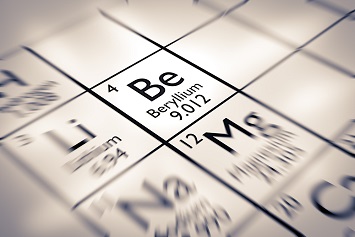On August 31, the Occupational Safety and Health Administration (OSHA) issued a final rulemaking amending the construction and shipyard standards for beryllium exposures (85 FR 53910). The amendments take effect on September 30.
The August 31 rulemaking is the latest regulatory action to address concerns about or objections to an “eleventh-hour” Obama administration rulemaking issued on January 9, 2017. The new rulemaking retains the permissible exposure limit (PEL) of 0.2 micrograms per cubic meter (µg/m3) and short-term exposure limit (STEL) of 2.0 µg/m3 in the 2017 final rule.
Changes in the new rulemaking finalize changes proposed in an October 8, 2019, notice of proposed rulemaking (NPRM) and closely resemble changes made to the general industry standard in a July 14, 2020, final rule. However, the final rule tailors some of the requirements to exposures commonly found in construction and shipyards.
OSHA published the amendments as proposed for hazard communication, housekeeping, hygiene areas and practices, methods of compliance, recordkeeping, and respiratory protection. The final rule included amendments as proposed, with some modification for definitions, medical surveillance, personal protective clothing and equipment, and written exposure control plans.
The final rule amends the agency’s definitions for chronic beryllium disease (CBD), CBD diagnostic center, and confirmed positive and adds a definition of beryllium sensitization, aligning definitions in the construction and shipyards standards with those in the general industry standard. The final rule defines beryllium sensitization as a response of the immune system in a specific individual who has been exposed to beryllium. Not every beryllium-sensitized person will develop CBD, but beryllium sensitization is essential for development of CBD, according to the agency.
Beryllium exposures in construction and shipyards are limited to a few operations, such as abrasive blasting in construction and shipyards and some welding operations in shipyards, according to OSHA. While airborne particulates during abrasive blasting operations can expose workers to beryllium in excess of the PEL, the blasting materials contain only trace amounts of beryllium, according to the agency. OSHA believes the process and materials do not present a dermal contact risk.
The requirements for written exposure control plans in the construction and shipyard standards are limited to the exposures for which the agency has strong evidence.
Evolving Regulation
The January 9, 2017, final rule went into effect May 20, 2017, and the agency began enforcing the PEL and STEL in construction and shipyards beginning May 11, 2018.
The 2017 final rule also contained ancillary provisions for exposure assessment, hazard communication, housekeeping, medical surveillance, methods for controlling exposures, personal protective clothing and equipment, respiratory protection, and recordkeeping that appeared to overlap with provisions of other standards. On June 27, 2017, OSHA published an NPRM proposing to revoke the ancillary provisions.
On May 7, 2018, the agency issued a direct final rule (DFR) adopting clarifying amendments to the general industry beryllium standard and addressing the application of that standard to materials containing trace amounts of beryllium. On December 11, 2018, OSHA published another NPRM to modify definitions in the general industry beryllium standard’s definitions, as well as several ancillary provisions.
On September 30, 2019, OSHA issued a final rule declining to revoke the ancillary provisions of the construction and shipyards standards it had proposed in June 2017.

